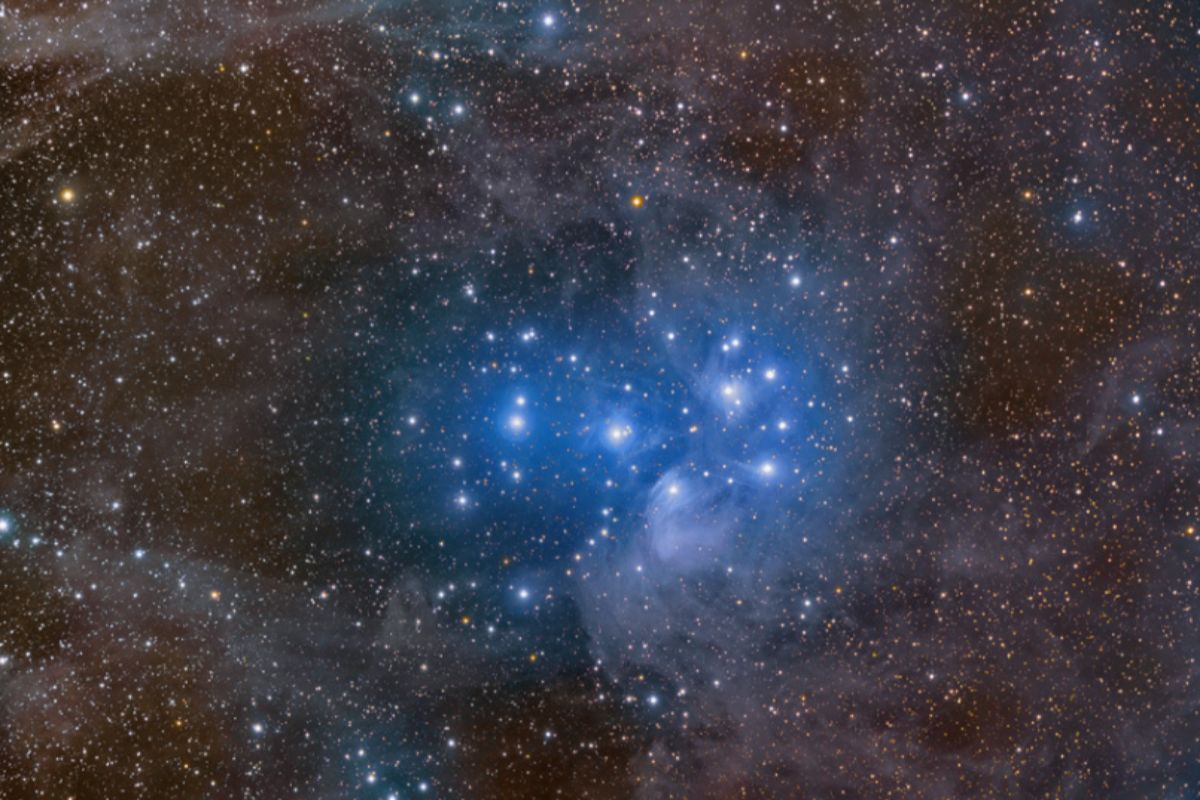- Covid-19.Astronomy in times of pandemic
In this series, the astronomer Rafael Bachiller reveals the most spectacular phenomena of the Cosmos. Topics of pulsating research, astronomical adventures and scientific news about the Universe analyzed in depth.
This weekend, if you have a window facing west, you can take advantage to see the superbright Venus next to the Pleiades after sunset. It is a conjunction that is only observable every eight years. If your window faces east, you can see Jupiter, Saturn, and Mars before sunrise.
A window on the sky
In this period of isolation we cannot go out to the street to walk under the sky, but we can take advantage of our windows, balconies or roofs to take a look at the sky, rest our eyes exhausted from all the time we spend in front of the screens, and travel mentally towards the landscapes of our solar system.
On March 26, Venus, the twin brother of Earth, reached a very special position, is what astronomers call its 'maximum elongation'. In this position, the planet, seen from Earth, was with a maximum apparent separation from the Sun, that is to say a little more than 46 degrees.
Thanks to this geometric configuration, these days we can see Venus lie down long after the Sun, leaving us time to observe its generous glow before the star-studded dark sky. Venus is now very close, only about 90 million kilometers away, so its apparent magnitude reaches a value of -4.5.
A visible conjunction every eight years
On Friday, April 3, Venus is in a very special position, passing exactly in front of the Pleiades cluster. And during the weekend, although a little more separate, the planet and the cluster continue to form very beautiful pictures. It should be observed from the end of twilight, above the western horizon, from 9pm until these stars go to bed gently behind the horizon shortly after 11pm.
Venus passes near the Pleiades once a year, but the conjunction is not always visible since it can sometimes occur in the apparent proximity of the Sun. The best conditions to observe this conjunction occur every eight years when, as now, Venus is in its maximum elongation position. If you miss this conjunction, you will have to wait until April 4, 2028 to see a similar one.
Seven sisters, seven cabrillas
Who has not ever been drawn to the vision of the Pleiades? This motley group of stars has attracted the attention of all human beings since the dawn of civilizations and, in fact, is among the first of the stars represented in prehistoric caves. In Spain we know this group as the Seven Sisters and in Don Quixote it is mentioned as the Seven Cabrillas.
Sancho talks about them, in the second part of the play, in his own way, very funny as usual: "... we were going where the seven cabrillas are ... as well as I saw them, I wanted to entertain myself with them for a while, if I didn't comply it seems to me to burst. I come, then, and I drink, and what do I do? , which are like wallflowers and like flowers, almost three quarters of an hour ... "
Located about 400 light years from Earth, in the constellation Taurus, the Pleiades are the most easily observable open star cluster and therefore one of the most studied. Although there are seven stars visible to the naked eye, the cluster is made up of hundreds of stars that can be studied with the help of the telescope. Thus it is known that this group of stars is dominated by some very luminous blue ones, which are about a hundred million years old. The cluster is embedded in a faint haze that glows from the reflection of starlight.
If your window is facing southeast
In this case you can take a look at the sky before sunrise, at around 6 o'clock, to see an exceptional planetary trio: Jupiter, Saturn and Mars, in descending order of elevation. The three planets are very close to each other (apparently) and their alignment indicates the line of the ecliptic.
Spring nights are still cool and the sky, when cloudless, seems very transparent. Although we are in the city, despite the obstruction of artificial lights, they are good times to look out the window, look up at the sky and enjoy the heavenly spectacle.
Rafael Bachiller is director of the National Astronomical Observatory (National Geographic Institute) and academic of the Royal Academy of Doctors of Spain.
According to the criteria of The Trust Project
Know more- Science and health
- science
PaleontologyThree species of hominids coexisted in South Africa two million years ago
PALEONTOLOGY Lucy already had a long childhood like that of humans
Found in AtapuercaExtract biological material from a human fossil from 800,000 years ago, the oldest from which it is obtained

